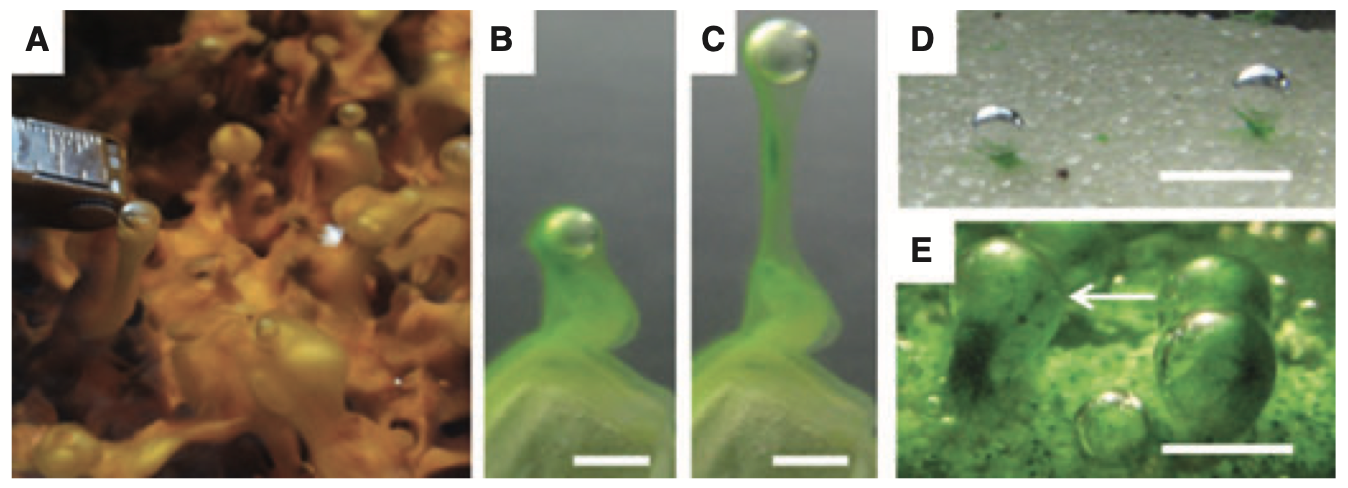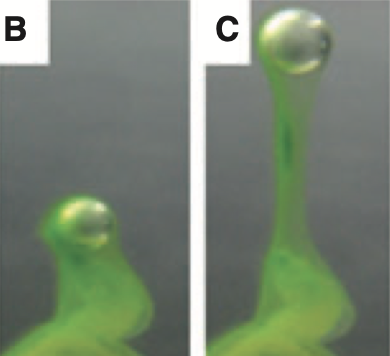
Gas release in photic-zone microbialites can lead to preservable morphological biosignatures. Here, we investi- gate the formation and stability of oxygen-rich bubbles enmeshed by filamentous cyanobacteria. Sub-millimetric and millimetric bubbles can be stable for weeks and even months. During this time, lithifying organic-rich lami- nae surrounding the bubbles can preserve the shape of bubbles. Cm-scale unstable bubbles support the growth of centimetric tubular towers with distinctly laminated mineralized walls. In environments that enable high photosynthetic rates, only small stable bubbles will be enclosed by a dense microbial mesh, while in deep waters extensive microbial mesh will cover even larger photosynthetic bubbles, increasing their preservation potential. Stable photosynthetic bubbles may be preserved as sub-millimeter and millimeter-diameter features with nearly circular cross-sections in the crests of some Proterozoic conical stromatolites, while centrimetric tubes formed around unstable bubbles provide a model for the formation of tubular carbonate microbialites that are not markedly depleted in 13C.
See paper: Bosak, T. Bush, J.W.M., Flynn, M.R.,Liang, B., Ono, S. A. P. Petroff, A.P. and Sim, M.S. (2009)
